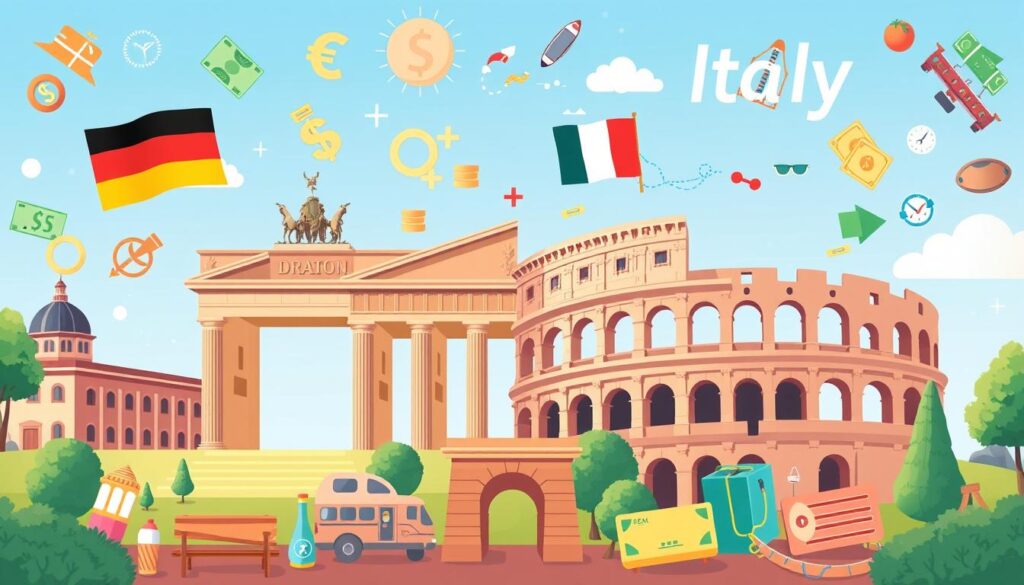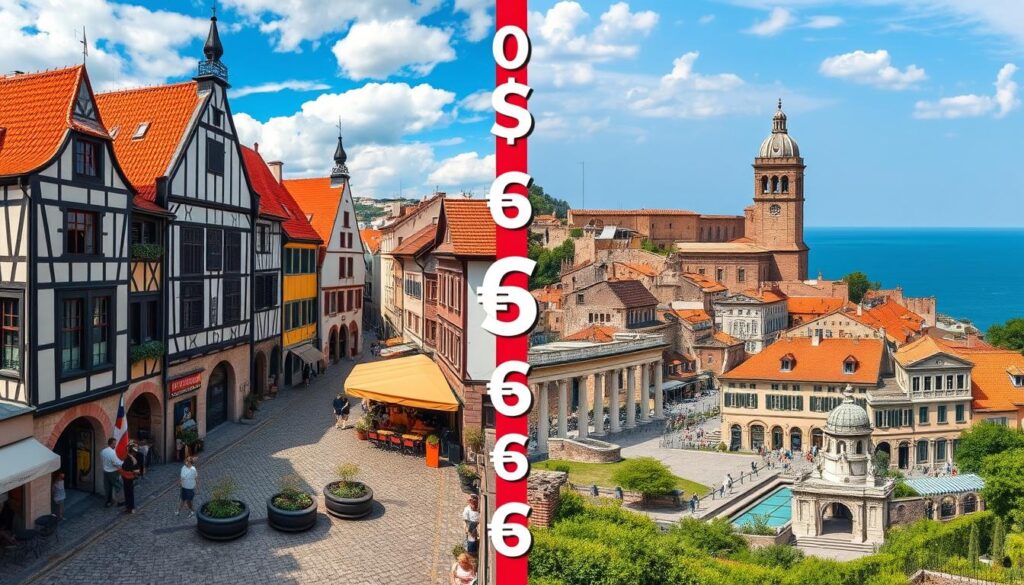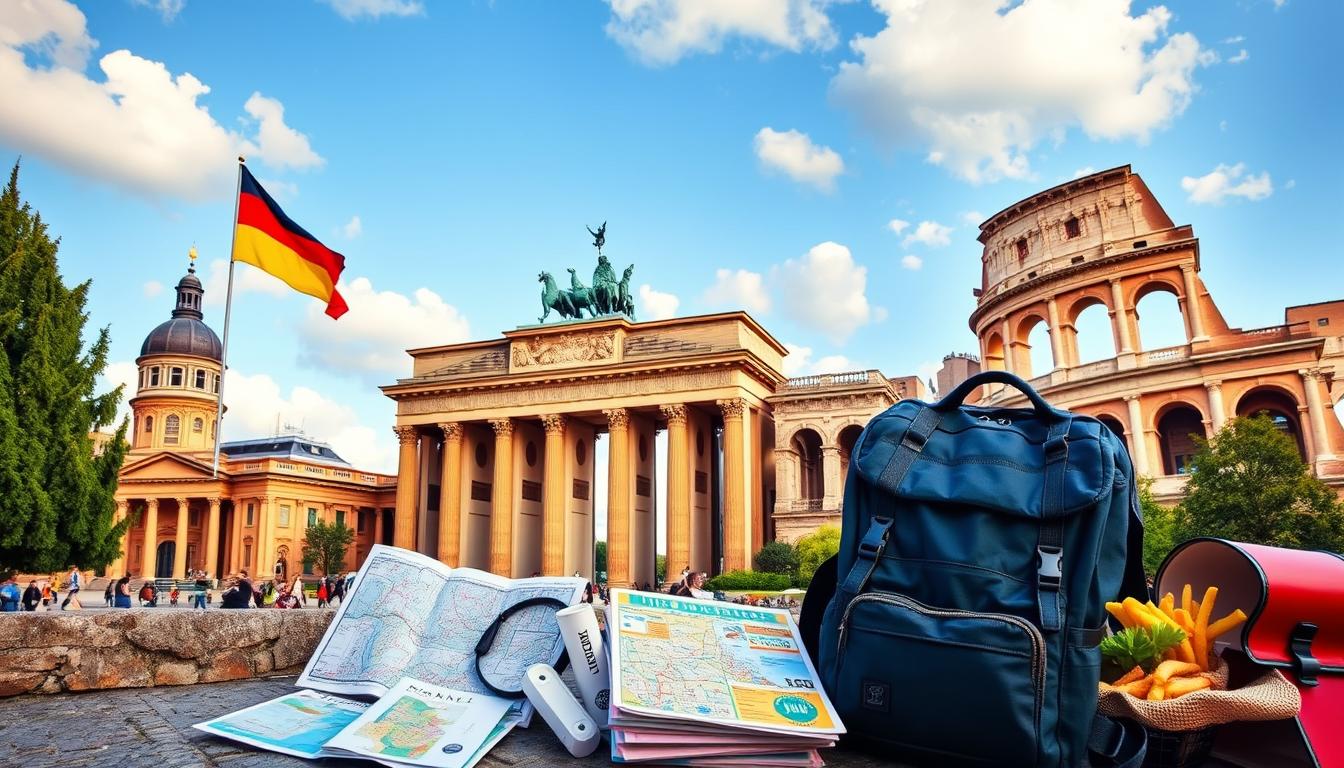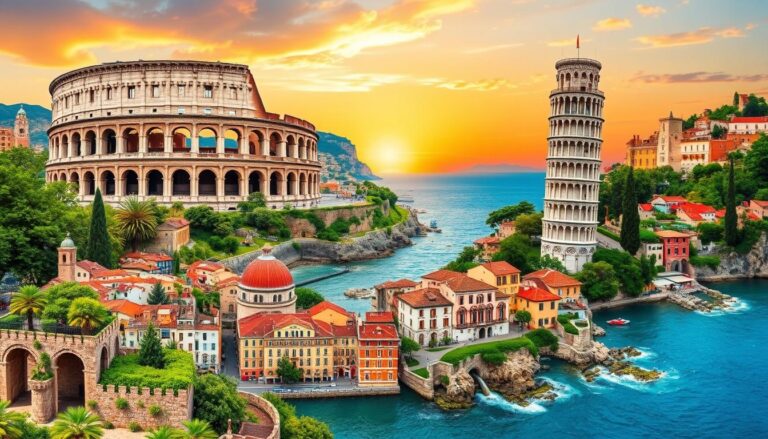Is it cheaper to visit germany or italy: Which Destination cost less
I’ve always been curious about the cost differences in European travel. Germany and Italy are two of the most famous places to visit. But, which one is better for your wallet? Let’s look is it cheaper to visit germany or italy?
Table of Contents
Key Takeaways
- Germany and Italy have distinct cost profiles, with Italy being slightly more affordable as a travel destination.
- Factors like accommodation, transportation, food, and attractions influence the overall travel expenses in both countries.
- Researching budget-friendly options and seasonal price variations can help you maximize your savings.
- Smaller cities in both Germany and Italy often offer more affordable accommodations and dining experiences.
- Considering your specific travel preferences and budgetary constraints can guide you towards the most cost-effective destination.
Understanding Cost Differences Between European Destinations
Planning a trip to Europe means knowing the cost differences between places. Travel cost rankings help us see how much each country costs. For example, Italy is ranked 150th, while Germany is a bit higher, suggesting Germany might be pricier.
Factors Affecting European Travel Expenses
Many things affect how much you’ll spend on a European trip. The cost of where you stay, from cheap hotels to fancy places, matters a lot. Also, how you get around, like by plane, train, or bus, adds to your expenses.
What you eat and do also affects your budget. Eating out or buying groceries, and visiting popular spots, can change your travel costs a lot.
Economic Zones Impact on Travel Costs
The economic zones in Europe, like the Eurozone, also play a role. The exchange rates and policies of these zones can change how much you spend. Knowing this helps budget-conscious travelers plan better for trips to Germany or Italy.

To save money, it’s key to compare costs of places to stay, how to get around, food, and activities. By understanding these, you can plan a trip that’s within your budget. This way, you can still enjoy Europe’s culture and history.
Is It Cheaper to Visit Germany or Italy: A Direct Comparison
Travel costs between Germany and Italy vary based on several factors. Italy’s prices tend to be higher in tourist spots, especially during peak times. Germany, however, has more consistent prices across different areas.
Both countries have expensive and affordable cities. To save money, visit less crowded places, travel off-peak, and choose budget-friendly places to stay and eat.
| Destination | Average Daily Budget | Budget-Friendly Cities |
|---|---|---|
| Germany | €30 – €50 |
|
| Italy | €36 – €50 |
|
When comparing germany vs italy vacation expenses, you can find deals in both places. Knowing the cost differences helps plan a memorable and affordable trip to these affordable european destinations.

“Exploring the diverse landscapes and rich cultural heritage of both Germany and Italy can be done without breaking the bank, as long as you plan your trip strategically.”
Accommodation Costs: German vs Italian Housing Options
Accommodation costs vary a lot between Germany and Italy. It’s important to know the different housing options and their prices. This helps travelers plan their trip and stay within their budget.
Budget Hotels and Hostels
In Germany, budget hotels and hostels cost between €20 to €35 per night. They offer basic amenities and are found in less crowded areas. In Italy, similar options might cost €25 to €40 per night, a bit more than in Germany.
Vacation Rentals and Apartments
Vacation rentals and apartments are great for those wanting more space. In both Germany and Italy, prices start around €50 per night. But, the location and what’s included can change the price a lot.
Luxury Accommodations
Luxury hotels and resorts in Germany and Italy can cost over €200 per night. They provide many amenities and services. These places are perfect for travelers looking for a high-end experience.
Germany usually has lower accommodation costs, especially in less visited areas. But, the quality and availability of places to stay in both countries can affect your total travel costs.
Transportation Expenses in Both Countries
Transportation costs differ a lot between Germany and Italy. Germany has a good public transport system that’s often cheaper. For example, regional train tickets start at about €20. In contrast, Italy’s high-speed trains are pricier, but budget airlines can be a good deal for longer trips.
In Italy, local transport in cities like Rome costs a bit more than in German cities. A single metro ride in Rome is €1.50, while in Berlin it’s €2.80. But, Germany has many bike-sharing programs, which are cheaper and fun to use.
Car rentals are cheaper in Germany than in Italy. A small car costs about €30-40 per day in Germany, but €40-50 in Italy. Fuel prices are similar, with a liter costing between €1.50 and €2.00 on average.
| Transportation Mode | Germany | Italy |
|---|---|---|
| Regional Train Tickets | €20 | €40+ |
| Local Metro/Bus Fare | €2.80 | €1.50 |
| Compact Car Rental (per day) | €30-40 | €40-50 |
| Fuel Costs (per liter) | €1.50-2.00 | €1.50-2.00 |
Germany is generally more affordable for transport, especially for public transit and car rentals. But, Italy’s fast trains and budget airlines are good for longer trips. Always look around to find the best and cheapest way to get where you need to go.
Food and Dining Cost Analysis
Exploring Germany and Italy on a budget means looking at food and dining costs closely. Both countries have great food, but knowing the prices can help you plan better. This includes restaurant prices, grocery shopping, and street food.
Restaurant Prices Comparison
Eating out in Italy can cost more, especially in tourist spots. Expect to pay €15-30 per person for a meal. In Germany, you can find meals for €10-25 per person, making it more affordable.
Grocery Shopping Expenses
Shopping for groceries costs about the same in both countries. But, Italy might have higher prices for some items. Shopping at local markets and supermarkets can help you save money on meals and snacks.
Street Food Options
Germany and Italy both have tasty and cheap street food. You can get a meal for €3-8 in both places. This lets you try local foods without spending too much.
Whether you like eating out, cooking yourself, or trying street food, knowing the costs helps. It makes your budget travel europe trip to Germany and Italy more affordable.
Entertainment and Attraction Costs
Planning a European vacation means thinking about entertainment and attraction costs. Germany and Italy have many cultural and historical sites. But, the prices can differ a lot between the two places.
In Germany, many museums and historical sites have affordable admission fees. They usually cost between €5 to €15 per person. Germany also offers city passes that give discounts to many sites. This helps travelers save money and enjoy the country’s culture.
Italy, however, has famous attractions like the Colosseum or the Vatican Museums. Their tickets cost between €15 to €25 per person. Italy’s landmarks and museums are impressive, but the higher prices can be a challenge for some budgets.
Both Germany and Italy have free and paid attractions. Finding the right mix can help you stay within your budget. By knowing the prices, you can enjoy more cultural experiences without overspending.
“Traveling to Europe can be an exhilarating experience, but it’s important to plan your budget carefully, especially when it comes to entertainment and attractions. By understanding the cost differences between Germany and Italy, you can make informed decisions that align with your travel priorities and financial constraints.”
Seasonal Price Variations and Tourist Seasons
When planning a trip to Germany or Italy, think about how seasons affect your budget. Prices for places to stay and things to do are usually higher in summer and holidays. But, visiting in late autumn or early spring can be cheaper.
Peak vs Off-Peak Pricing
In the peak season, staying in low-cost German cities and inexpensive Italian towns costs more. But, going in the shoulder or off-peak seasons can save you a lot. You’ll find cheaper hotels, lower ticket prices, and fewer people around.
Best Time to Visit for Budget Travelers
The best time for budget travelers is usually September or early spring. These times have fewer tourists, so prices for places to stay, travel, and food are lower. Plus, some low-cost German cities and inexpensive Italian towns keep prices steady all year.
| Season | Average Daily Budget (USD) | Accommodation Prices | Crowds |
|---|---|---|---|
| Peak (Summer) | $150 – $300+ | Higher | Larger |
| Shoulder (Spring/Fall) | $100 – $200 | Lower | Moderate |
| Off-Peak (Winter) | $80 – $150 | Lowest | Smaller |
Visiting Germany or Italy in the shoulder or off-peak seasons can make your trip cheaper. You’ll still get to see the culture and beautiful landscapes these places offer.
Budget-Friendly Cities in Both Countries
Germany and Italy have many affordable cities for travelers. Places like Leipzig, Dresden, and Hamburg in Germany offer cheap stays and lots to do.
In Italy, towns like Bologna, Naples, and Palermo are cheaper than Rome or Venice. These spots give you real local experiences at lower costs. You can enjoy the local life without the high prices of famous places.
Visiting these budget-friendly cities in Germany and Italy can save you money. Yet, you still get to make lasting memories and see the special charm of each place.







